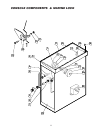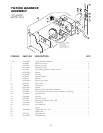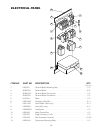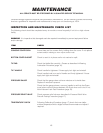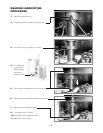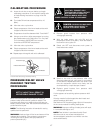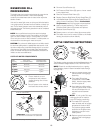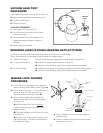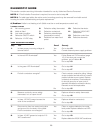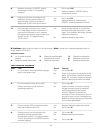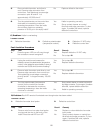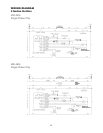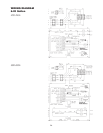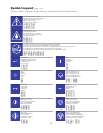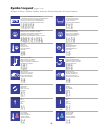
21
Fault Isolation Pr
ocedure
Step Test
1. In a cold state, does the pressure gauge
read in the green zone?
2. Do the contactors shut off too early?
(before reaching normal maximum
operating pressure.)
3. Does the green LED remain illuminated
after the contactors shut off?
4. Unplug control box and measure the
resistance across potentiometer
(temperature control). Is it approximately
0 ohms at maximum and 50,000 ohms at
minimum setting?
Result Remedy
Yes Go to step #2.
No There is air present in the jacket of the
kettle. Follow Kettle Venting Procedure
(page 18). If constant venting is required,
there is a leak that should be corrected.
Yes Go to step #3.
No Check contactor contacts for pitting.
Voltage across terminal of contactor
while energized signifies a poor
contact. Replace contactor/s as
necessary. Check elements for short to
ground or open circuit. If elements are
defective, contact the factory. Elements
are not field replaceable.
Yes Replace defective safety thermostat.
No Go to step #4.
Yes Go to step #5.
No Replace defective thermistor.
Yes Go to step #6.
9. Measure continuity of ON/OFF switch/
temperature control. Is it operating
properly?
10. Unplug control box and measure the
resistance across potentiometer. Is it
approximately 0 ohms at maximum
setting and 50,000 ohms at minimum?
11. Remove edge connector from control
box. While kettle is cold or thermistor is
removed and allowed to cool, measure
the resistance between edge connector’s
pins #2 and #7. Is it approximately
100,00 ohms?
Yes Go to step #10.
No Replace defective ON/OFF switch/
temperature control.
Yes Go to step #11.
No Replace defective potentiometer
(ON/OFF switch/temperature control)
Yes Spray contact cleaner on control box
terminals and edge connector. Try box
again, if the problem still exists, replace
defective control box.
No Replace defective thermistor.
Possible Causes
1. Air in jacket requires
venting.
2. Defective safety thermostat.
3. Defective potentiometer
(temperature control).
4. Defective thermistor.
5. Defective contactor/s.
6. Defective control box.
7. Defective elements/s.
B/ Problem: Kettle heats too slowly or not hot enough. (Note: normal max. operating pressure with an
empty kettle is 30-35 psi.)



